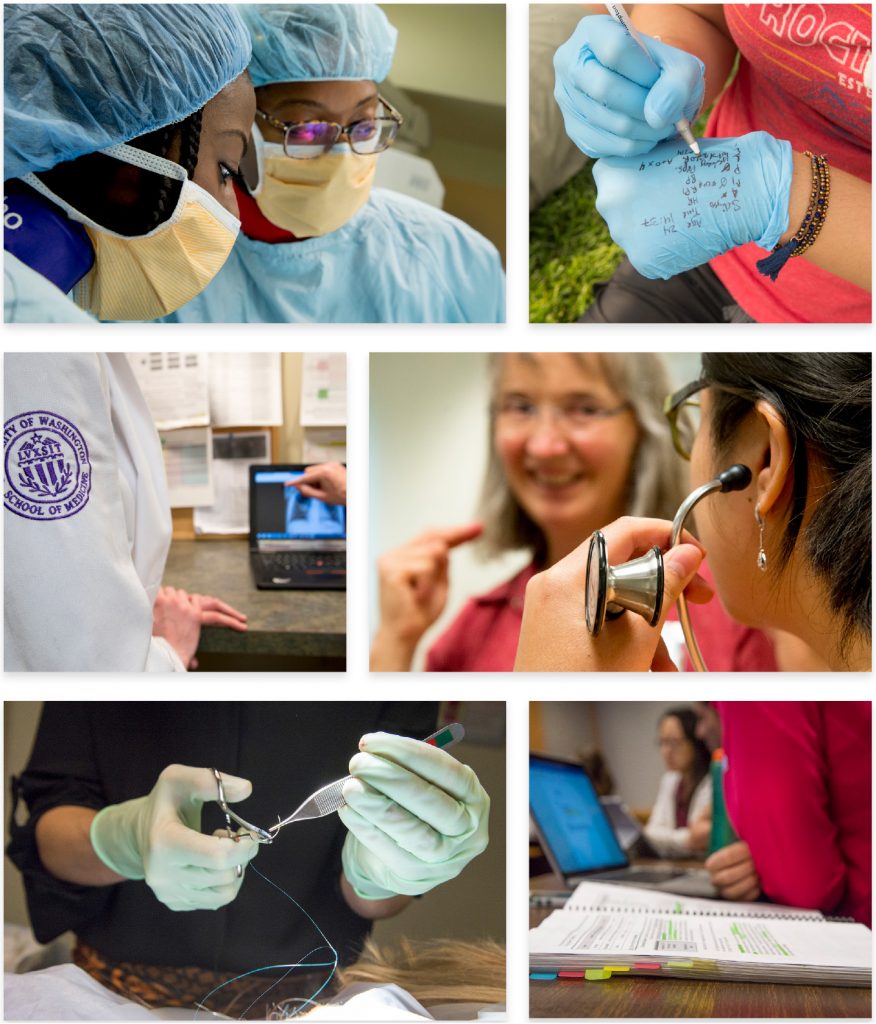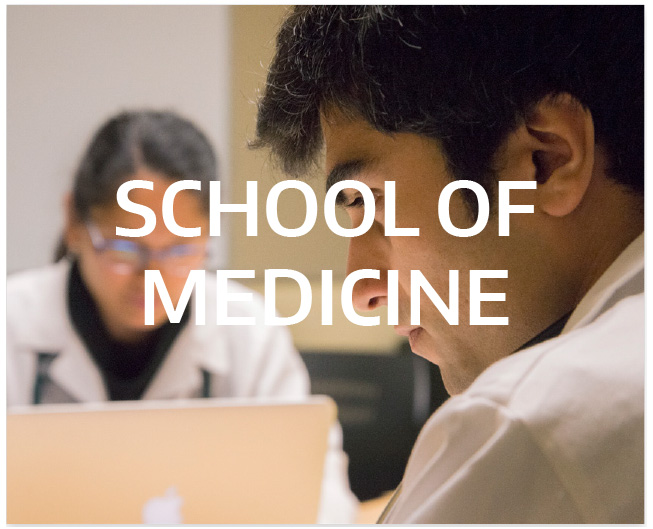Photography
UW Medicine photography

Every photo is a chance to portray real, honest moments of our UW Medicine providers, staff, faculty and students. With this documentary-style photography, we are trying to capture the true warmth of humanity, as well as the intimacy between our staff and the people we serve.
Our brand photography is all about storytelling — we believe that each face represents a story and a real-world experience, need or success. We photograph our stories in a refreshing perspective that always puts our patients first. When we’re successful, our images draw the viewer into an empathetic and friendly scene that speaks to the provider and patient experience. This approach distinguishes us from most of our competitors and solidifies our credibility with our audience.
At UW Medicine we pride ourselves on showcasing inclusivity and equality to all people. With our photography, we want to document the whole story that represents diversity of ages, genders and ethnicities.
We try to avoid photos that are obviously staged, feature unrealistic lighting effects or dramatic retouching or manipulation. In order to quickly engage a user’s attention in the digital environment, it’s best to select clean, uncluttered photos with an obvious point of visual focus. Bright color effectively pulls a viewer’s attention to a photo.
Click link below to register for the UW Medicine Asset Library.
Service line photography

Our photography is not about the mechanics of healthcare; instead, it reflects the experience — visual, emotional, social — of receiving care from UW Medicine.
We illustrate the engagement and exchange between the provider and the patient, reflecting that patients are equal and active partners in the process of their care and treatment.
The images communicate that our providers are engaged, accessible and committed to improving the lives of patients; they are propelled by compassion, expertise and unwavering purpose. The way we photograph patients shows that they feel valued by their providers and the UW Medicine system.
Education/School of Medicine photography

The transmission of knowledge and values is at the heart of the UW School of Medicine, and our photography illustrates that. Both faculty and students are active participants in learning environments, whether in a lab, exam room or a small group session in a classroom.
Our imagery shows the engagement and connection between instructors and students. Faculty are animated by their pleasure in sharing their expertise and deep respect for the learning process and for patients.
We depict the varied emotions and reactions in the learning environment: intense concentration, “aha” moments, hesitancy, tenacity, camaraderie and more.
Research photography

This imagery reflects the realities and range of our research: some is done solo and requires deep focus while some takes place in collaboration with others.
Whether working at the bench, reviewing data on a laptop or having an informal hallway conversation, our researchers are a key pillar of the UW Medicine mission to improve the public’s health.
Stock photography

Stock photos are a useful way to illustrate sports and physical activities, domestic moments, the outdoors and lifestyle scenes. They can illustrate sensitive subjects like mental health, addiction issues, sexual health and more.
Stock images should share the same warm qualities as our documentary-style photography: authentic and intimate; shot with available light or subtle fill light. Avoid photos that are obviously staged, feature unrealistic lighting effects or are heavily Photoshopped.
When illustrating a healthcare scene using stock, be sure that it does not feature a staff member, ID badge, uniform, activity or location that is clearly not associated with UW Medicine. Images that show the back of a model’s head with a focus on a patient’s face are acceptable.
Visual details of non-UW Medicine providers or locations are permissible (hands, pharmacy pill bottles, medical equipment, generic exam rooms, etc.).
Landscapes should reflect the Pacific Northwest — for example, a rocky Puget Sound shoreline rather than a tropical beach.
Bio photography
Bio Photography Requests
More information about bio photography requests can be found here.

Standards:
- The photo must be a high-quality color portrait, professionally shot in a studio against a gray or light-blue background. It should be shot from the mid-chest up with the right shoulder leading.
- Appropriate business attire is required — providers should dress as they do when seeing patients.
- Lab coats are not required, but if the provider wears one while seeing patients, it is recommended that they wear one in the headshot. If worn, coats should be clean and well-pressed.
- Scrubs and ID badges are not allowed.
- The file to be uploaded to a bio should be a 72 ppi jpg cropped at 480 × 480 px.
Bio edits and technical photo requirements:
- Temporary blemishes (pimples, shaving nicks) and shine should be removed as much as possible.
- Final edited 300 ppi / 3000 × 3720 px jpg files will be uploaded to WebDam by the end of the week for each shoot and will be accessible for departments and coordinators to download. Portraits will be labeled LastName-MiddleInitial-FirstName.jpg.
Photographers guidelines for research, shop settings and university locations
All individuals who appear in a photo intended for public viewing taken in a University setting with hazardous materials and/or physical safety hazards must follow health and safety compliance requirements and best practices for those locations, including wearing appropriate personal protective equipment (PPE).
UW Medicine wardrobe suggestions for photo shoots
This is a list of approved wearable suggestions for our photo and video shoots.
Group photography
Generally, we discourage staged photos of groups. It is more compelling to photograph a person in the act of delivering care, researching, teaching, etc.
Events photography
Images should capture the spirit of an event by showing people in conversation with each other, listening to a speaker, etc. As noted above, staged group shots are not preferred but there are exceptions: for media purposes, group shots of award winners, for example, are appropriate.
Photo and video credits
- Images created by UW Medicine staff: UW Medicine
- Images created by UW staff: UW
- Getty Images: [Photographer’s name]/[Collection Name]/Getty Images
- Stocksy Images: [Photographer’s name]/Stocksy United
- Thinkstock Images: [Photographer’s name]/[Collection Name]/Thinkstock or as otherwise shown on the Thinkstock website
- Other stock photo companies: Refer to their licensing terms for the appropriate credit format
- Freelance photographer: [Photographer’s name]
- Photo provided by an external individual or organization: Photo Courtesy of [Name]
- Video provided by an external individual or organization: Video Courtesy of [Name]

Image treatment
The photography throughout the site should be treated. We call the treatment the “Pacific Northwest Exposure.” To achieve this treatment follow these exposure settings in Photoshop.
300 dpi for print
72 ppi for web/mobile/social images
Photography Dos & Don’ts
Dos

- Focus on real moments and real stories.

- Aim for clear photos for readability.

- Use natural smiles, real poses.

- Focus on real scenarios with natural lighting.
Don’ts

- Do not use images for decoration only (for example, cute babies). Images should support the main point of the page or topic.

- Do not put text in images. Search engines and screen readers can’t read it (mobile use only).

- Avoid stiff and unnatural smiles and look-at-the-camera poses.
- Avoid staged and unnatural depictions of interactions.

- Avoid over-processed, unnatural colors and false versions of nature.
- Avoid poorly lit photography.